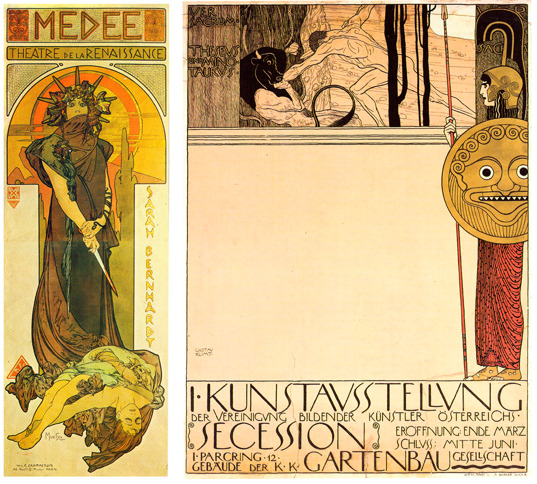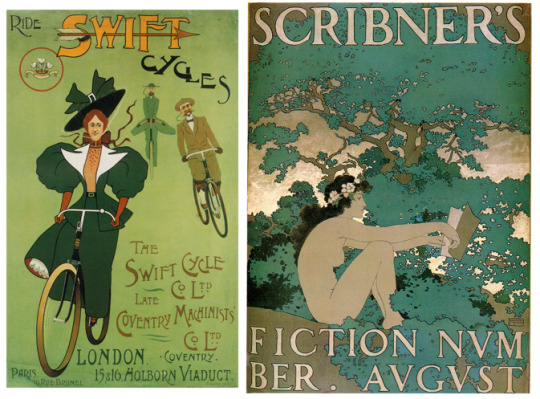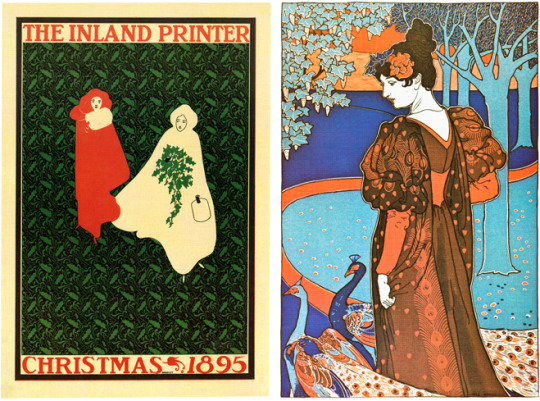#Théophile-Alexandre Pierre Steinlen
Explore tagged Tumblr posts
Text

Théophile-Alexandre Pierre Steinlen - 'Les Soliloques du pauvre' by Jehan Rictus, 1903.
20 notes
·
View notes
Text

Théophile-Alexandre Steinlen (1859-1923) - Le coq rouge (Red Rooster)
illustration from Maurice Boukay's 'Chansons rouges', 1896
Coq rouge, au sommet du clocher. Que vois-tu dans le cimetière? - Je vois les morts lever leur pierre. Les martyrs vont se revancher... (Red rooster, at the top of the bell tower. What do you see in the cemetery? - I see the dead raise their stones. The martyrs will take revenge...)
#théophile alexandre steinlen#le cog rouge#red rooster#maurice boukay#chansons rouges#song book#19th century#retribution#skeletons#cemetery#macabre#book illustration#illustration#left wing art#art
51 notes
·
View notes
Photo


1. Théophile-Alexandre Pierre Steinlen (1859-1923), 'Winter- Cat on a Cushion', 1909 (Source) 2. Théophile-Alexandre Pierre Steinlen (1859-1923), 'Summer- Cat on a Balustrade', 1909 (Source)
#théophile-alexandre pierre steinlen#french artists#french painters#cats#animals#vintage art#lithography#lithographs
247 notes
·
View notes
Text







my favourite vintage posters
théophile alexandre steinlen (1896) \\ henri de toulouse-lautrec (1893) \\ pierre bonnard (1894) \\ will bradley (1894) \\ will bradley (1895) \\ alphonse mucha (1897) \\ adolfo hohenstein (1898) \\ alphonse mucha (1898) \\ gustav klimt (1898) \\ maxfield parrish (1897) \\ ?? (ci. 1898) \\ maxfield parrish (1897) \\ will bradley (1895) \\ louis john rhead (1897)
buy me a coffee
#art#on art#mine#art compilation#théophile alexandre steinlen#theophile steinlen#theophile alexandre steinlen#henri de toulouse-lautrec#will bradley#pierre bonnard#alphonse mucha#adolfo hohenstein#gustav klimt#maxfield parrish#louis john rhead
578 notes
·
View notes
Text
21 Works, September 23rd. is Suzanne Valadon 's day, her story, illustrated with footnotes #208
21 Works, September 23rd. is Suzanne Valadon ‘s day, her story, illustrated with footnotes #208
Suzanne Valadon (Marie-Clémentine Valadon), (1865, France – 1938, France)Le Lancement du filet/ Throwing the net, c. 1914Oil on canvas201 x 301 cmGeorges Pompidou Center, Paris, France Presented at the Salon des Indépendants in 1914, the monumental academic panel irritated avant-garde critics. Arthur Cravan, who in issue five of his episodic review Now, writes an angry criticism of the Salon,…

View On WordPress
#Art#Artists#Berthe Morisot#Biography#Edgar Degas#Fine Art#fineart#footnotes#Jean-Jacques Henner#Pierre de Chavannes#Renoir#Suzanne Valadon#Théophile Alexandre STEINLEN#Toulouse-Lautrec#Zaidan
0 notes
Text
Nude Masterpieces: Famous Painters, Egyptian, Greek, Roman Art, A4 Color Print
https://www.etsy.com/fr/listing/1136308340/chefs-douvre-de-nus-peintres-connus-art
A complete set of unused, but canceled, stamps issued by Equatorial Guinea in 1975 is the source of this publication.
It concerns well-known painters, or works found over the centuries:
we find in the order of the stamps:
0.05 e. Egyptian art: three musicians - tomb of Nakht, Thebes
0.10 e. Greek art: pottery - naked woman at the toilet
0.15 e. Pompeian fresco, the three graces 1st century BC
0.20 e. Indian art: cave painting from Ceylon, the girl with golden skin 5th century
0.25 e. Hugo Van Der Goes: Adam and Eve in Paradise 1479
0.30 e. Albrecht Dürer: The Suicide of Lucretia 1518
0.35 e. Johann Liss: Venus in the mirror, toilet
0.40 e. aesthetics of Indian miniature art: the woman on the terrace 1700
0.45 e. Laville Leroulx, F. Benoist: Portrait of a Black Woman 1800s
0.50 e. Pierre Auguste Renoir: Naked Woman in a Landscape 1883
0.55 e. Paul Gauguin: Vairumati 1897
0.60 e. Théophile Alexandre Steinlen: naked woman with a scarf 1900
1 e. Pablo Picasso: the toilet 1906
2 e. Amédéo Modigliani: standing nude, Elvira 1918
10 th. Henri Matisse: Seated Nude on a Red Background 1925
70 th. Paul Mathias Padua: naked woman
All these works are found in the montage that I offer you in two A4 prints, to which are added the pasted stamps (but protected in an envelope) with their quotations.
(stamps can be extracted with care)
You can see these 3 impressions on the first view, detailed in the views that follow.
The main characteristics of this article:
Shipping fee included
The article comes in 3 plastic pockets slipped into a rigid cardboard envelope to protect them during transport.
Letter sent by registered registered mail
A4 portrait printing on high quality photo paper (280 gsm)
multicolored
Model made as a single model at the end of the year (2021)
Can be used as WALL DECORATION with a FRAME NOT PROVIDED
(an example is shown to you in the last view: this is a Magod wooden frame, color: fine walnut with gold edge.
Can be used to enrich your collection in a binder (plastic pouch provided)
For any further information, you can of course contact me.
#Masterpiece#PabloPicasso#HenriMatisse#AlbrechtDürer#AugusteRenoir#PaulGauguin#AmédéoModigliani#NewLookPhilately#OriginalArtwork#CollectibleStamp#WallDecoration#HomemadeMontage#GiftIdeasForAll
3 notes
·
View notes
Photo

THÉOPHILE "THÉO" VAN RYSSELBERGHE
On this day of 23rd November, Théophile "Théo" van Rysselberghe (23 November 1862 – 14 December 1926) was born in Ghent, Belgium.
He was a neo-impressionist painter, who played a pivotal role in the European art scene at the turn of the twentieth century.
He studied at the Academy of Ghent under Theo Canneel and at the Académie Royale des Beaux-Arts in Brussels under Jean-François Portaels. The North African paintings of Portaels had started an orientalist fashion in Belgium. Their impact would strongly influence the young Théo van Rysselberghe.
At only eighteen, he exhibited at the Salon of Ghent. He painted Self-portrait with pipe, and Child in an open spot of the forest, and he makes his first steps towards impressionism.
Between 1882 and 1888 he made three trips to Morocco and he came in touch with contemporary artists like Frantz Charlet, Darío de Regoyos. Constantin Meunier, John Singer Sargent, Ralph Curtis. Emile Verhaeren. During this period he created pieces like Spanish woman, Sevillan woman, Arabian street cobbler, Arabian boy, Resting guard The kief smokers, The orange seller and a seascape The strait (setting sun), Tanger . Arabian phantasia, Abraham Sicsu, Caravan in the mountains past Schliat, Gate of Mansour-El-Hay, Meknès, and Morocco (the great souk).
The painting on his visits to Morocco depicted bright lights and colour but as he drew toward Impressionism they are rather subdued colours especially in Jeanne and Marguerite Schlobach, Octave Maus, Camille Van Mons, Marguerite Van Mons, Woman with Japanese album, Madame Picard in her Loge, Madame Oscar Ghysbrecht, and Het Zwin at high tide.
He discovered the pointillist technique when he saw Georges Seurat's La Grande Jatte. Together with Henry Van de Velde, Georges Lemmen, Xavier Mellery, Willy Schlobach, Alfred William Finch, and Anna Boch he "imported" this style to Belgium.
Théo van Rysselberghe abandoned realism and became an adept of pointillism which reflected in his Madame Oscar Ghysbrecht, Madame Edmond Picard, Pierre-Marie Olin. He came across renowned painters Eugène Boch, Sisley, Signac, Degas, and Henri de Toulouse-Lautrec.
His famous portrait of Alice Sèthe, Dunes in Cadzand, The rainbow were inspired by Pointillism.
In Paris, he had a meeting with Theo Van Gogh and managed thus to invite Vincent van Gogh to the exhibition in Brussels. That is where Van Gogh sold Vigne Rouge in Montmajour, the only painting he ever sold.
In 1897, van Rysselberghe moved to Paris. Along with Paul Signac, Maximilien Luce, Aristide Delannoy, Alexandre Steinlen, Camille Pissarro, Van Dongen, George Willaume, etc., he contributed to the magazine Temps Nouveaux.
In his later years of his life, his approach became more relaxed, and abandoned Pointillism completely.
After some prospecting, touring, his brother Octave van Rysselberghe, built him a residence at the Côte d'Azur and became detached from the Brussels art scene.
Théo van Rysselberghe was one of the prominent co-founders of the Belgian artistic circle Les XX s, under the patronage of Octave Maus, whose notable members were James Ensor, Willy Finch, Fernand Khnopff, Félicien Rops, Auguste Rodin, and Paul Signac.
Much of his works still remain in private collections and rarely be seen. One occasion was the retrospective Théo van Rysselberghe in Brussels and later in The Hague.
In November 2005, his work Port Cette fetched a record 2.6m € at an auction in New York.
11 notes
·
View notes
Photo



ハイライト-ボストン美術館
誰もが知る名画

Dance at Bougival|1883 Pierre-Auguste Renoir (French, 1841–1919)

Postman Joseph Roulin|1888 Vincent van Gogh (Dutch [worked in France], 1853–1890)

La Japonaise (Camille Monet in Japanese Costume)|1876 Claude Monet (French, 1840–1926)

Water Lilies|1907 Claude Monet (French, 1840–1926)

Where Do We Come From? What Are We? Where Are We Going?|1897–98 Paul Gauguin (French, 1848–1903)

Dos Mujeres (Salvadora y Herminia)|1928 Frida Kahlo (Mexican, 1907–1954)

The Daughters of Edward Darley Boit|1882 John Singer Sargent (American, 1856-1925)

At Dusk (Boston Common at Twilight)|1886 Childe Hassam (American, 1859-1935)

Composition with Blue, Yellow, and Red|1927 Piet Mondrian (Dutch, 1872–1944)
インパクトのあるオマージュ

Guernica to Wounded Knee|2012 Stan Natchez (American[Tataviam] 1954-)
土地の開発をめぐりアメリカ政府がネイティブアメリカンを襲撃した1970年台の事件( Wounded Knee )を、スペイン内戦を描いたパブロ・ピカソの『ゲルニカ』に重ねて描写したオマージュ作品。
古代エジプト美術
エジプトで発掘された壁画や彫刻、埋葬品、副葬品などが充実している。



有名なメンカウラー王と王妃の像。

King Menkaura (Mycerinus) and queen|2490–2472 BCE
メソアメリカの美術
個人的に好きな中米の古代文明に関するコレクション。

Olmec Portrait Mask|オルメカの仮面


メソアメリカの球技で使用されていたコートマーカー(Hacha)と石のベルト。

古代マヤの遺跡から発掘された土器。

中米コスタリカ〜パナマで見つかった金の装飾品。
企画展
フランスの画家アンリ・���・トゥールーズ=ロートレック(Henri de Toulouse-Lautrec)が描いたポスターの特集。

Moulin Rouge: La Goulue|1891

Divan Japonais|1892–93

Jane Avril |1899

Aristide Bruant in his cabaret|1892

Ambassadeurs – Aristide Bruant|1892

Collection du Chat Noir | 1898 Théophile Alexandre Steinlen (1859-1923)
ロートレックら19世紀の芸術家の社交場となったキャバレー「ル・シャ・ノワール(Le Chat Noir)」のポスター。

小洒落た企画展のお土産コーナー。
その他ギャラリー






0 notes
Photo

LANDESGALERIE LINZ
LA BOHÈME.
TOULOUSELAUTREC UND DIE MEISTER VOM MONTMARTRE
Pressekonferenz: MI, 16. OKT. 2019 | 10 Uhr
Eröffnung: Mi., 16. Oktober 2019 | 18.30 Uhr
Ausstellung: 17. OKT. 2019 - 19. JAN. 2020
Museumstraße 14, 4010 Linz
http://www.landesmuseum.at/de/ausstellungen/detail/la-boheme-toulouse-lautrec-und-die-meister-vom-montmartre.html Die Ausstellung zeigt das gesamte lithografische Plakatwerk Toulouse-Lautrecs in Gegenüberstellung mit Arbeiten seiner Vorgänger und Zeitgenossen, wie beispielsweise Alfons Mucha, Théophile-Alexandre Steinlen, Pierre Bonnard und Felix Vallotton. Die Werkauswahl umfasst sechs Themenbereiche, darunter „Chanson & Cancan���, „Zirkus & Cabaret“, „Theater & Oper“, „Kokotten & Kurtisanen“. Die Plakatentwürfe vermitteln das Lebensgefühl jener Zeit und entführen die Besucher/innen in die Atmosphäre der Belle Époque um die Jahrhundertwende. Darüber hinaus führt die Ausstellung den/die Betrachter/in an die Wurzeln unserer heutigen Massenmedien heran: In den Arbeiten Toulouse-Lautrecs und seiner Weggefährten wird die Druckgrafik erstmals als elementares Medium zur Informationsverbreitung eingesetzt und damit zur eigenständigen Kunstform. Die Besonderheit der Ausstellung liegt außerdem in der lückenlosen Präsentation der Originallithografien zu Toulouse-Lautrecs Plakatwerk, das in Europa in dieser vollständigen Form in nur zwei Museumssammlungen vorhanden ist.Zum zehnjährigen Jubiläum des Linzer Kulturhauptstadtjahrs und nach dem großen Erfolg der Ausstellung „Toulouse-Lautrec: Der intime Blick“ im Jahr 2009 präsentiert die Landesgalerie Linz mit dem Plakatwerk des Künstlers eine außergewöhnliche Facette seines Werks, die ihn und seine Zeitgenossen zu Vorreitern der modernen visuellen Kommunikation machte. Henri de Loulouse-Lautrec, Ambassadeurs: Aristide Bruant, 1892, © Musée d'Ixelles-Bruxelles
0 notes
Text
THÉOPHILE ALEXANDRE STEINLEN

Théophile Alexandre Steinlen naît en 1859 à Lausanne, artiste anarchiste, peintre, graveur, illustrateur, affichiste et sculpteur suisse Il suit des études de lettres à l’académie de Lausanne.
En 1878, il part vivre à Paris où il gagne d’abord sa vie comme dessinateur industriel.
En 1883, il s’installe à Montmartre, quartier des artistes, où il fera connaissance et se liera d’amitié avec des artistes comme Toulouse-Lautrec, Aristide Bruant, Vallotton ou Alphonse Allais. Steinlen collabore dans cette période comme dessinateur et illustrateur aux journaux «Le Chat noir» et «Le Mirliton». Sa première exposition a lieu en 1884, à la Bodinière. C’est en 1885 qu’il dessine la première de ses célèbres affiches : une affiche pour l’Hôtel de Paris à Trouville sur Mer.
S’ensuivent des affiches pour la Compagnie française, le cabaret «Le Chat noir» et bien d’autres. En 1911, il fonde avec Forain et Léandre le journal Les Humoristes et réalise également des illustrations pour des livres.
À partir de 1893, il expose ses œuvres au Salon des indépendants, plus tard régulièrement aussi au Salon des humoristes. Sa conviction politique l’amène à dessiner de nombreuses affiches contre la Première Guerre mondiale. Il décéda en 1923 à Paris.

Tournée du Chat noir 1896 THÉOPHILE ALEXANDRE STEINLEN Lithographie (62X40cm)
Tournée du Chat noir est réalisée en 1896 pour promouvoir le cabaret parisien Le Chat noir, à Montmartre. Elle mentionne notamment Rodolphe Salis, propriétaire et exploitant du cabaret. Elle a été reproduite sur de nombreux supports, notamment en posters et cartes postales, et des exemplaires originaux sont conservés dans de nombreux musées.
Cette lithographie en couleur de 40 centimètres de large et 62 centimètres de haut représente un chat noir sur fond jaune et rouge. La tête du chat est entourée d’une auréole rouge Un élément décoratif qui n’est pas anodin, car il transforme la bête hirsute en animal sacré et l’érige en icône gothico-byzantine. Le chat, fier et revêche, pose ainsi en majesté comme un saint. Dans l’auréole on peut voir inscrite la devise «Montjoye Montmartre», parodiant un cri de guerre médiéval.
L’affiche est composé d’aplats de couleurs tranchées et réduites au noir et au rouge, formes épurées. La masse sombre du félin se détache sur la feuille, à la fois compacte et subtilement esquissée grâce à quelques traits caractéristiques, griffes, queue, moustaches et yeux. Cette façon d’aller à l’essentiel, sans détail inutile, est en vogue.
La typographie : Le caractère tarabiscoté de l’écriture est nouveau pour l’époque. Des lettres qui s’entremêlent, un aspect pas vraiment net, la queue du chat qui brouille la lecture. Un style typique de l’époque, que l’on retrouve également chez Toulouse-Lautrec, Pierre Bonnard, ou encore Jules Chéret, autre grand affichiste du moment.
Angèle
0 notes
Text

Théophile-Alexandre Pierre Steinlen - Glory, 1915.
#Théophile-Alexandre Pierre Steinlen#Glory#tomb#dead#death#death bed#mourners#mourning#crying#veil#hooded
17 notes
·
View notes
Text
Designer
O poster artístico moderno foi uma invenção do final do século 19. Antes disso a tipografia para cartazes nas ruas com enfaze em textos, e produtos eram vendidos em eventos de publicidade usando o principal meio de persuasão: Palavras, em uma grande variedade de tipos.
A técnica de litografia encorajou mudanças. A impressão litografica é descrita como um meio autografico pois é impressa direto nas linhas desenhadas a mão pelo artista litografico ou mestre impressor. O processo foi inventado pelo Alemão Alios Senefelder entre 1796 e 1799, envolve desenhar com grafite em uma superfície plana, esse processo foi inicialmente feito em uma pedra especialmente preparada, e mais tarde em uma superfície de plástico plana que era compatível com com a prensa mecânica. Os artistas poderiam visitar as gráficas, tanto parar instruir o mestre impressor, quanto parar trabalhar diretamente nas placas litograficas. A litografia atraiu artistas que presavam a qualidade da marcação do meio.
O novo poster também era diferente no quesito que possibilitava a linha de copia, ou texto, e esquemas pictóricos para integrar no meio artístico. Esse era o caso em paris, aonde designers e artistas como Jules Chéret, Théophile-Alexandre Steinlen, Henri de Toulouse-Ladrec e Pierre Bonnard, usavam do Lettering parar melhorar as composições pictograficas.
A identidade do poster depende da associação entre o gráfico e as artes comerciais. nos anos de 1880 a 1890 posters eram normalmente usados para anunciar um portfólio de impressos ou para um concerto tanto como era usados para vender bicicletas, maquinas de costura ou sabão.
0 notes
Photo

Théophile-Alexandre Pierre Steinlen (1859-1923), ''Les Soliloques du pauvre'' by Jehan Rictus, 1903 Source
#théophile-alexandre pierre steinlen#french artists#french painters#illustrators#illustration#illustrations#les soliloques du pauvre#jehan rictus#death#vintage art#vintage illustration
202 notes
·
View notes
Text

21 Works, September 23rd. is Suzanne Valadon 's day, her story, illustrated with footnotes #208
Please follow link for full post
Suzanne Valadon, Renoir, Edgar Degas, Jean-Jacques Henner, Théophile Alexandre STEINLEN, Zaidan, biography, Art, Artists, footnotes, fine art, fineart, Pierre de Chavannes, Berthe Morisot, Toulouse-Lautrec,
0 notes
Text

Théophile-Alexandre Pierre Steinlen - “The Poor Man’s Soliloquies” by Jehan Rictus, 1903.
12 notes
·
View notes